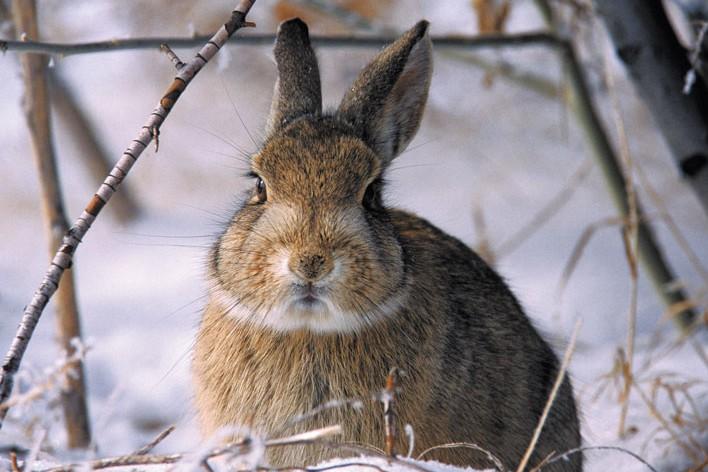Techniques, gear and more
Advertisement
The New Year often finds hunters in the doldrums, looking for ways to get outdoors and cure the cabin fever they contracted over the holidays. Rabbit hunting offers the ideal remedy. It also provides an opportunity to hone your hunting and shooting skills while putting some oft-undervalued meat on the table.
Whether your tastes run to cottontails or snowshoe hares, it’s tough to beat the opportunities offered on a cold, sunny day in Quebec’s forested landscapes. Eastern cottontails wear their brown fur coats all year long, providing some contrast against a wintry background, while snowshoes will have turned white, making them difficult to see if they aren’t on the move. Although the two species sometimes occupy similar habitats, snowshoes are much more prevalent in the more northerly forests, while cottontails are much more adapted to thick wooded copses in the agricultural ones. Both species prefer habitats featuring thick understories offering food and security, so be prepared to work for your shots. Daily bag limits vary depending on the region, so be sure to check the regs before heading out. A day’s rabbit hunt is sure to leave you tired and wet, but you will be totally reinvigorated by the time you head back to the truck.
Advertisement
Technique
Most successful rabbit hunters use a combination of pushing bush and spot-and-stalk methods. The presence—and abundance—of rabbits in a particular area will be betrayed by the number of tracks you find in the snow. Work your way along the edges of the thick stuff, pausing regularly in hopes of prompting a flush. Look well ahead and down low as you move; occasionally you’ll catch a wary bunny before it sees you.
Essential gear
Shotguns and .22s are both good choices, each with its own advantages. Smoothbores (12- or 20- gauges choked improved cylinder) are best for taking flushed rabbits on the move, while rimfires allow extended-range shots at static targets. As for clothing, keep in mind that Quebec winters can be cold; dress in layers so that you can adjust for changing temperatures.

